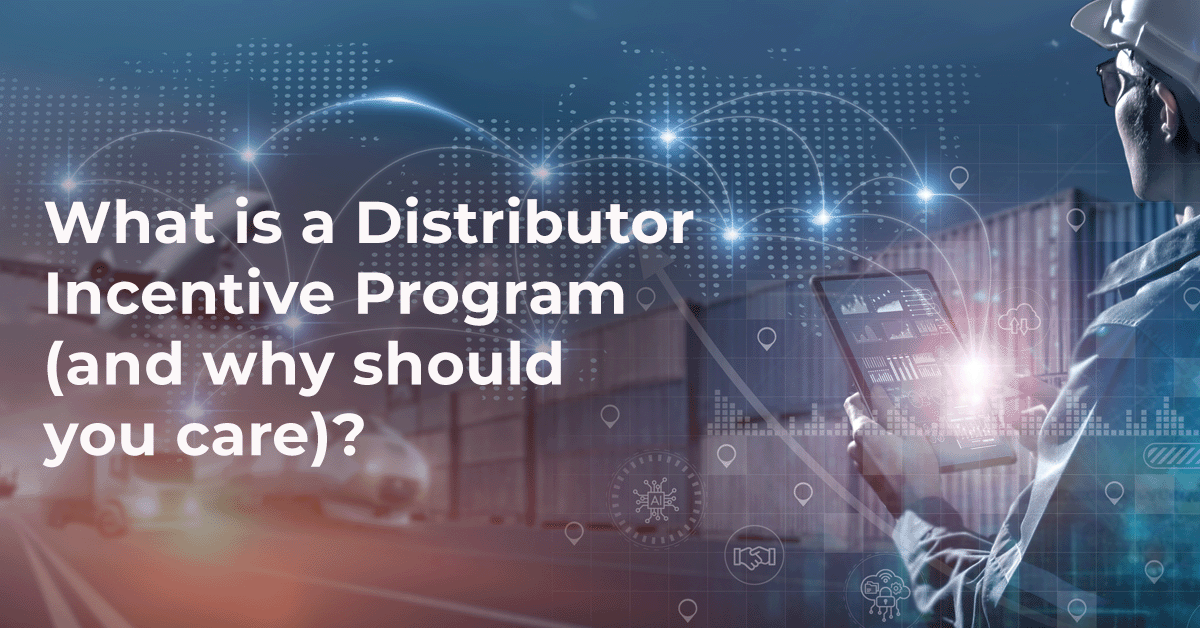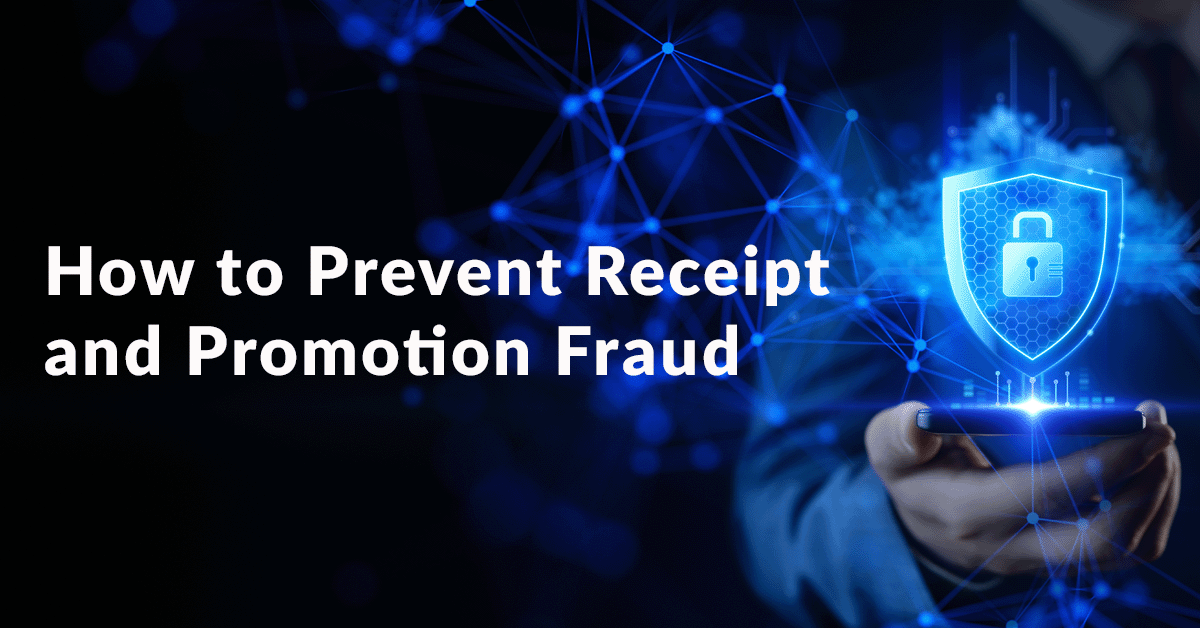Developing strong partnerships is critical if you sell products through distributors. They're your connection to end customers, and if they aren't actively promoting and selling your products, your sales will suffer.
A distributor incentive program is a key part of any channel partner marketing strategy. At a high level, it provides a strategic way to build relationships, boost performance, and ensure your products get the attention they deserve.
Key takeaways
There are eight essential features every distributor incentive program needs:
Feature |
What it Delivers |
Why it Matters |
How to Measure |
| 1. Goal-aligned program design | Clear objectives tied to your brand strategy | Ensures every program element contributes to business outcomes | Sales volume increase; new customer acquisition rate |
| 2. Comprehensive reward structure | Mix of monetary and non-monetary incentives | Appeals to diverse motivations and sustains long-term engagement | Reward redemption rates; participant satisfaction scores |
| 3. Tiered program architecture | Structured level advancement system | Motivates partners through friendly competition and aspirational rewards | Tier advancement rates; revenue contribution per tier |
| 4. Robust performance and attribution tracking | Real-time monitoring and analytics; granular sell-in, sell-out | Enables data-driven optimization and attribution, helping you identify top performers | Participation rates; claim submission rates |
| 5. Transparent communication framework | Multi-channel program updates | Eliminates confusion and helps to maintain distributor participation | Portal login frequency; distributor feedback scores |
| 6. Diverse earning mechanics | Multiple ways to earn rewards beyond purchases | Deepens engagement and captures valuable partner data across touchpoints | Non-purchase activity participation; activity mix per distributor |
| 7. Exclusive education and training opportunities | Access to business-building resources and product knowledge | Builds partner capabilities while strengthening brand loyalty | Training module completion rates; time from enrollment to completion |
| 8. Strong anti-fraud capabilities | Automated validation and duplicate detection | Protects program integrity and reduces financial losses | Invalid submission rate; duplicate submission detection rate |
Top 8 Features of a Successful Distributor Incentive Program
1. Goal-aligned Program Design
What is It?
Clear, measurable objectives that align with your business strategy. For example, selling more of a particular product line, acquiring new customers, or increasing retention rates among distributors.
Why It Matters
Without defined goals, you can't measure success or optimize your program. Well-defined objectives ensure every aspect of your distributor incentive program works toward specific business outcomes, making it easier to justify investment and demonstrate ROI to stakeholders.
Fully digitized B2B channel loyalty loyalty platforms, like Snipp's, provide this level of strategic flexibility. They let you configure and run multiple program types simultaneously. So, volume-based rebates, seasonal promotions, and points-based loyalty can all operate together within a single system that adapts as your business priorities evolve.
How to Measure It
Track:
- Sales volume increases
- New customer acquisition rates
- Retention improvements (quarter-on-quarter)
Set quarterly benchmarks to evaluate progress toward annual goals.
2. Comprehensive Reward Structure
What is It?
A balanced mix of monetary and non-monetary incentives tailored to distributor preferences, including rebates, purchase-based discounts, training programs, exclusive events, merchandise, and gift cards.
Why It Matters
Diverse reward options appeal to different distributor motivations and ensure sustained engagement throughout your program. While cash rewards offer immediate value, non-monetary incentives like exclusive training, travel experiences, and recognition create emotional connections and memorable associations with your brand.
The most effective programs give distributors meaningful choice. Snipp's rewards platform offers a diverse range of incentives – from financial rewards, like digital rebates and prepaid gift cards, to exclusive development opportunities, including MDFs and access to partner events.
How to Measure It
Monitor:
- Redemption rates
- Program satisfaction
- Time-to-redemption metrics
Survey distributors annually to adapt to evolving customer preferences and keep your rewards offering competitive.
3. Tiered Program Architecture
What is It?
A structured system that provides progressively greater incentives and cash rebates the more distributors promote and sell your products.
Why It Matters
Tiered structures use the spirit of competition/gamification and aspirational rewards to motivate distributors. This approach transforms abstract sales goals into tangible milestones, making advancement feel achievable while ensuring benefits give program members a reason to engage with your program.
Snipp's B2B channel loyalty platform handles the mechanics behind tiered programs. It automatically moves partners between levels as they hit behavior or commercial milestones, adjusts benefits, and shows them exactly where they stand and what's required to reach the next tier.
How to Measure It
Track:
- Tier advancement rates
- Performance gaps between tiers
- Revenue contribution from each tier
Calculate average time to tier advancement to ensure tiers are appropriately challenging yet achievable.
4. Robust Performance and attribution Tracking
What is It?
Monitoring key program metrics, including participation rates, reward redemptions, sales growth, customer retention, and program ROI across all distributor activities. Detailed insights enable you to tie verified uplift to specific distributor actions.
Why It Matters
Data driven insights and total attribution models allow you to identify top performers, what really moves the sales needle, and spot areas that need improvement. Actively tracking KPIs provides the real-time insights you need to optimize incentives programs for maximum ROI and continuous improvement.
The depth of analytics matters. Versatile platforms, like Snipp, provide SKU-level sales data broken down by region, distributor, and retailer – complete with 100% verified sell out and interactive dashboards that reveal competitive purchasing patterns and basket-level behavior.
This granular view helps you understand not just who's performing, but why, iterate and refine successful tactics, and react to changes in demand quickly.
How to Measure It
Measure:
- Participation rates
- Email engagement rates
- Claim submission rates
Get a complete attribution by linking verified sales and claims data to specific distributor actions, then. Then, calculate ROI by comparing incremental sales lift against program costs, aiming for returns of 3:1 or higher.
5. Transparent Communication Framework
What is It?
Consistent updates about program rules, rewards, progression criteria, and performance status delivered through multiple channels. For example, website, program portal, email, or app.
Why It Matters
Effective communication eliminates confusion, sets clear expectations, and maintains distributor engagement throughout the program. Regular updates and transparent information sharing keeps distributors engaged and aware of the value your program offers.
An omnichannel approach works best here. With Snipp, distributors can access customized portals for detailed program management, receive automated email notifications for important updates, and use mobile-responsive interfaces to check their status and manage rewards from any device. This ensures consistent communication, regardless of how partners prefer to engage.
How to Measure It
Track:
- Portal login frequency
- Distributor feedback scores
- Support ticket volume
Monitor how quickly distributors respond to program updates and promotional campaigns. Faster response times indicate strong program engagement and effective messaging.
6. Diverse Earning Mechanics
What is It?
Multiple pathways for distributors to earn rewards, including both purchase and non-purchase. This includes purchase validation via receipts, invoices, and purchase orders as well as non-purchase engagements like sharing content on social media, referring new partners, or completing training modules.
Why It Matters
Purchase-only programs limit engagement to transactional moments. By rewarding distributors for activities that build their expertise and amplify your brand, you create more touchpoints for interaction and gather richer data about partner behavior. Distributors who engage beyond purchases typically demonstrate stronger loyalty and higher lifetime value.
Snipp's receipt processing platform handles both purchase and non-purchase validation – automatically processing invoice submissions while also tracking activities like profile completion, referrals, and content engagement. This dual capability lets you build comprehensive engagement strategies that keep distributors connected even between buying cycles.
How to Measure It
Track:
- Non-purchase activity participation rate (% of active distributors completing non-purchase activities)
- Activity mix per distributor (how many different activity types each distributor engages with)
- Correlation between non-purchase engagement and sales performance
Compare sales growth between distributors who regularly engage in non-purchase activities versus those who only submit purchase claims.
7. Exclusive Education and Training Opportunities
What is It?
Access to product training, business development resources, industry certifications, technical documentation, and best practice sharing. These help distributors grow their capabilities and better represent your brand.
Why It Matters
As we discussed in the comprehensive reward structure section, effective distributor programs offer more than financial incentives. Education and training transform your program from a transactional relationship into a strategic partnership. Distributors who understand your products deeply become more effective sellers, provide better customer service, and position your brand more competitively.
Training opportunities also create natural non-purchase earning mechanics. For example, Snipp's B2B loyalty platform let’s distributors earn points or qualify for higher tier benefits by completing courses, achieving certifications, or attending exclusive events. This approach rewards the behaviors that ultimately drive better sales performance while building partner expertise.
How to Measure It
Monitor:
- Training module completion rates
- Time from enrollment to completion
- Sales performance comparison: distributors pre-training vs. post-training
Survey distributors to understand which training resources deliver the most value and where they need additional support.
8. Strong Anti-fraud Capabilities
What is It?
Automated systems that validate claim authenticity, detect duplicate submissions, identify suspicious patterns, and prevent fraudulent reward redemptions. For example, through transaction fingerprinting and multi-factor authentication.
Why It Matters
Fraudulent claims drain program budgets and undermine trust with legitimate participants. Strong fraud prevention protects your investment while maintaining program integrity. Modern tools, like Snipp's receipt processing platform, create unique “fingerprints” for each transaction based on retailer, date, time, location, and product order – ensuring no one can submit the same receipt twice. For high-value rewards, two-factor authentication adds an extra security layer that prevents bad actors from exploiting your program.
How to Measure It
- Invalid submission rate (as % of total submissions)
- Duplicate submission detection rate
- Flagged claim resolution time
Calculate prevented fraud value by tracking the total dollar amount of detected fraudulent claims. Benchmark your invalid submission rate – well-run programs typically see rates below 5%, with best-in-class programs maintaining rates under 2%.
Tips for Implementing Your Distributor Incentive Program
Assess Your Business Needs
Are you trying to break into new markets? Increase sales of specific products? Or increase customer loyalty? Conduct a thorough evaluation of your strategic objectives to determine what you want to get out of your program and how you’ll measure your success.
How to Action It
- Conduct stakeholder interviews across sales, marketing, and operations teams to identify pain points and opportunities
- Analyze current distributor performance data to spot gaps
- Create a priority matrix ranking objectives by potential impact and feasibility
Why It's Important
Understanding your goals ensures every aspect of your distributor incentive program supports your business strategy. Programs built with clear objectives are easier to measure, optimize, and justify to stakeholders than those without.
Start Small and Scale Gradually
Take a phased approach to program launch. Begin with a pilot in a limited geography, product line, or distributor segment. Once you’ve refined your approach and proven the value of your program, you can expand it to your full network.
How to Action It
- Select a representative test group of 10-20 distributors or focus on a single region or product category.
- Run the pilot for one quarter to identify operational challenges.
- Gauge distributor response and refine your program mechanics accordingly.
Gather feedback through surveys and direct conversations use these insights to optimize the program before broader rollout.
Plan Your Reward Fulfillment Process
Establish a structured system for delivering rewards promptly and in formats that distributors value – whether that’s through digital transfers, physical checks, gift cards, or merchandise.
How to Action It
- Map out the complete fulfillment workflow from claim validation to reward delivery.
- Establish target processing timelines.
- Choose partners or platforms that offer multiple payout options.
Build in quality checks to prevent errors and maintain detailed records for auditing and tax compliance purposes.
Why It's Important
Timely, accurate reward delivery directly impacts program credibility and distributor trust. Delays or errors in fulfillment undermine participation and damage relationships. By contrast, a smooth experience reinforces the value of the program and encourages continued engagement.
Legal and Compliance Are Key
Review your program thoroughly before launch to ensure it complies with local regulations, trade laws, and industry-specific requirements across all operating regions.
How to Action It
Engage legal counsel early in program design to review incentive structures, terms and conditions, and tax implications. Create comprehensive program rules addressing eligibility, reward fulfillment, dispute resolution, and termination. Build compliance checkpoints into your program administration process.
Why It's Important
Non-compliant programs risk legal challenges, financial penalties, and reputational damage. Proactive compliance review protects your organization while ensuring distributors understand their rights and responsibilities within the program framework.
Use Rebate Management Software
Simplify claims validation and processing with digital rebate management software. These platforms provide everything you need – from rebate setup and administration to designing reward tiers and fraud prevention.
How to Action It
Prioritize solutions that offer:
- Automated claim processing
- Flexible reward options
- Real-time reporting dashboards
- Fraud prevention tools
- Seamless integration with third-party systems
Request demos and pilot programs before implementing your chosen solution to ensure it meets your needs.
Why It's Important
Managing complex incentive programs through disconnected systems creates inefficiencies and errors. Full-service, integrated solutions improve program efficiency and provide real-time insights to help you optimize program performance.
Why Distributor Incentive Programs Matter for Your Business
A distributor incentive program is a structured rewards system that, like other B2B channel loyalty programs, is designed to motivate channel partners to achieve specific business objectives. It combines financial incentives (like rebates and volume-based discounts) with non-monetary benefits (such as exclusive perks and co-marketing opportunities) to keep partners engaged.
By linking rewards directly to measurable actions – whether that's hitting sales targets, expanding into new territories, or improving product knowledge – these programs create a clear value exchange that benefits both manufacturers and their distribution partners.
Build Strong Relationships
Distributor incentive programs create loyalty by offering compelling rewards and exclusive opportunities that deliver mutual value.
Boost Performance and Productivity
Rewards and rebates motivate distributors to prioritize your products over competitors', increasing brand affinity and sales.
Collect Partner Insights
Distributor incentive programs help you collect a wealth of partner data across sales, participation, geographical, and reward preferences – enabling you to optimize your channel strategy for maximum impact.
2 Examples of Distributor Incentive Programs in Action
IKO's ROOFPRO Loyalty Program
IKO operated the ROOFPRO loyalty program for contractors and distributors but wanted to improve invoice processing speed, accuracy, and reporting capabilities. By implementing a centralized digital platform, distributors could upload bulk sales files and receive rebates through an automated clearing house (ACH) or paper checks. The streamlined system has significantly improved contractor and distributor satisfaction while reducing processing time.
Key takeaway: Modernizing legacy loyalty programs with technology-driven solutions improves user experience and operational efficiency, leading to higher satisfaction and sustained participation.
Sika Grows Distributor and Retailer Loyalty in Indonesia
Sika wanted to grow brand awareness, sales, and loyalty among distributors and retailers in Indonesia while collecting customer data and matching sell-out with sell-in to understand channel efficiency. Snipp built a B2B loyalty program with separate dashboards for distributors and retailers, delivery note processing, tiered rewards, and SKU-level reporting segmented by region, distributor, and retailer.
Key Takeaway: Separate program tracks for different partner types – combined with granular sales reporting – provide the visibility needed to optimize performance across complex, multi-tier distribution networks.
Frequently Asked Questions
What’s the difference between a distributor incentive program and a loyalty program?
While the terms are often used interchangeably, a distributor incentive program typically focuses on short- to medium-term performance goals with immediate rewards. Loyalty programs, on the other hand, emphasize long-term relationship building through sustained engagement.
The most successful programs combine elements of both, offering immediate incentives for specific actions alongside higher-value rewards for consistent partnership.
What types of rewards work best for distributor incentive programs?
Effective distributor incentive programs offer diverse reward options. Offering a mix of monetary and non-monetary incentives allows distributors to select rewards that align with their individual preferences and business priorities, leading to higher engagement across your distributor network.
How long should a distributor incentive program run?
Short-term contests and promotions should rotate quarterly to maintain freshness and excitement. For long-term rebate and loyalty programs, you should only need to refresh them every year or two – with regular performance reviews to monitor performance.
How do you measure the success of a distributor incentive program?
Effective measurement requires tracking key performance indicators across three areas:
- Engagement
- Business impact
- Financial returns
Start by monitoring how distributors interact with the program through participation rates, reward redemption patterns, and portal activity. These engagement signals help you understand whether the program resonates with your audience.
On the business side, compare sales performance during incentive periods against baseline metrics, and track changes in order frequency and customer retention rates. Finally, calculate program ROI by weighing incremental sales lift against total costs, including both platform fees and reward fulfillment expenses.
Building a Program That Delivers Results
Distributor incentive programs strengthen partnerships, drive sales growth, and create competitive advantages in crowded markets. By aligning your program goals with distributor motivations, providing diverse and valuable rewards, communicating effectively, and tracking performance rigorously, you create a system that benefits everyone involved.






